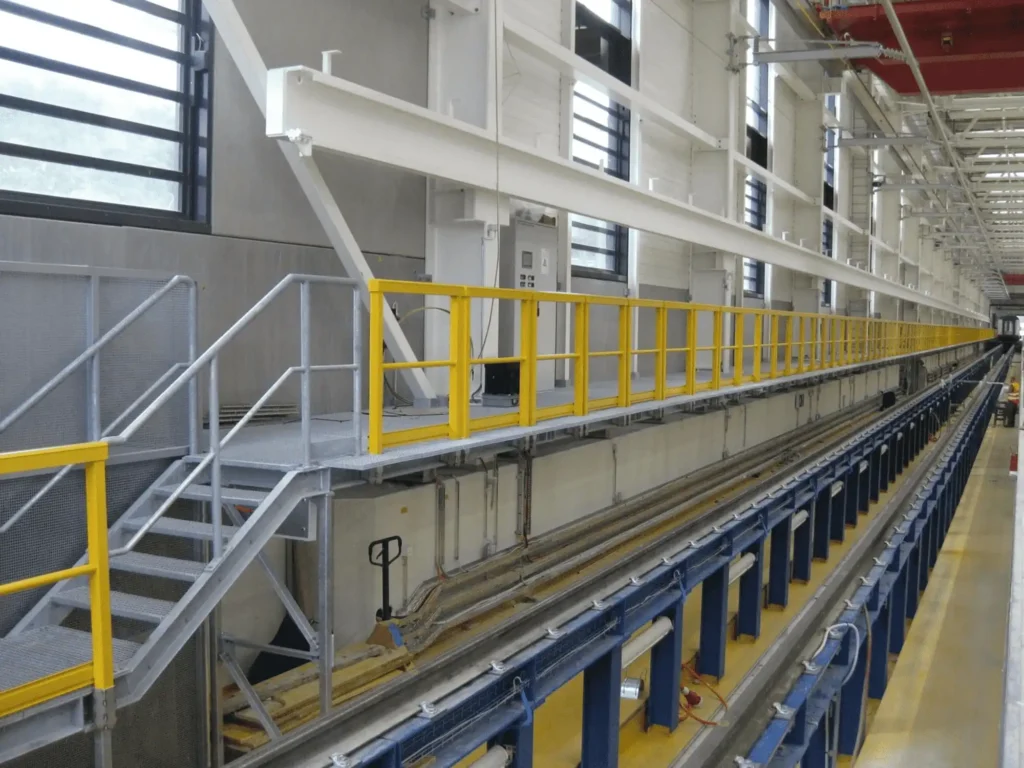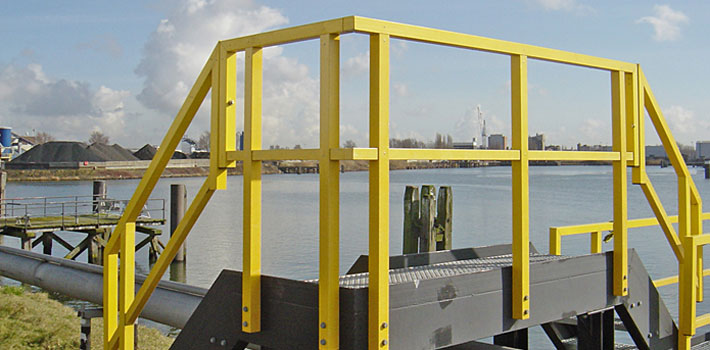
Fiberglass Reinforced Plastic (FRP) handrails have become a trusted solution for industries that require long-lasting, low-maintenance, and corrosion-resistant safety barriers. Whether used in industrial plants, marine environments, public infrastructure, or cleanroom facilities, FRP handrails offer unmatched performance compared to traditional materials like steel or wood. This guide explores the key standards governing FRP handrails, outlines the installation process, and provides practical maintenance tips to ensure safety and durability for years to come.
1. Understanding FRP Handrails
FRP handrails are safety rail systems made from composite materials, typically consisting of fiberglass reinforcements embedded in a thermosetting resin matrix. This combination creates a structure that is lightweight yet strong, corrosion-resistant, and suitable for harsh environments where metal would rust or wood would degrade.
Key Advantages:
Corrosion Resistance: Ideal for chemical plants, offshore platforms, and wastewater facilities.
High Strength-to-Weight Ratio: Easy to handle and install without heavy lifting equipment.
Non-Conductive Properties: Safer in electrical and high-voltage environments.
Low Maintenance: Requires minimal upkeep compared to steel, which needs regular painting or coating.
FRP Handrails enclosure barrierguardrail balustrade
FRP HandrailsFRP Round Tube Handrails
FRP HandrailsFrp Handrail Universal Joint
FRP Handrails
2. Safety and Durability Standards for FRP Handrails
Compliance with recognized safety standards ensures that FRP handrails perform reliably in real-world applications. Some of the most relevant standards include:
2.1 OSHA (Occupational Safety and Health Administration)
In the United States, OSHA specifies requirements for guardrail and handrail systems:
Height Requirements: Top rails between 42 inches (±3 inches) from the working surface.
Strength: Must withstand at least 200 pounds of force applied in any direction.
Smooth Surface: Prevent injuries and snagging of clothing.
2.2 ISO 14122-3
This international standard covers permanent means of access to machinery, including guardrails and handrails:
Minimum height and load-bearing criteria.
Clearances to avoid trapping hazards.
Standardized design for industrial safety compliance.
2.3 ASTM Standards
ASTM E84: Flame spread testing for fire resistance.
ASTM D790: Flexural properties to assess strength and stiffness.
ASTM D543: Chemical resistance for use in corrosive environments.
2.4 Local Building Codes
Depending on the region, additional regulations may apply, covering public safety, accessibility (ADA in the U.S.), and structural performance.

3. Installation Guidelines for FRP Handrails
Installing FRP handrails is straightforward, but following best practices ensures compliance with safety standards and long-term durability.
Step 1: Pre-Installation Planning
Conduct a site survey to determine layout and dimensions.
Select FRP components based on environment (resin type, UV protection, color).
Verify compliance with relevant standards and codes.
Step 2: Material Preparation
Use pre-fabricated pultruded FRP profiles for rails and posts.
Ensure all components are clean, defect-free, and ready for assembly.
Prepare stainless steel or FRP fittings for corrosion resistance.
Step 3: Assembly
Position posts according to design spacing (commonly 1.2 to 1.5 meters apart).
Attach rails using mechanical fasteners or adhesive bonding.
Incorporate kick plates where required for fall protection.
Step 4: Anchoring
Secure posts into concrete or steel base plates using anchor bolts.
Verify alignment to maintain uniform height and spacing.
Step 5: Quality Inspection
Check all connections for tightness.
Confirm dimensions match design specifications.
Perform a load test to validate strength.
4. Maintenance of FRP Handrails
One of the biggest advantages of FRP handrails is minimal maintenance, but periodic checks will maximize service life.
Routine Inspections
Inspect for cracks, chips, or UV discoloration.
Check fasteners and joints for looseness.
Look for impact damage in high-traffic areas.
Cleaning
Wash with mild soap and water to remove dirt and debris.
Use non-abrasive tools to avoid surface scratches.
For marine or chemical environments, rinse regularly to prevent salt or chemical buildup.
Repairs
Minor surface damage can be sanded and recoated with compatible resin.
Replace damaged sections rather than attempting to weld or heat-repair.
Long-Term Performance
FRP handrails typically last 20–25 years or more with proper care.
Unlike steel, they do not require repainting or galvanizing.
5. Applications of FRP Handrails
FRP handrails are widely used in:
Industrial Plants: Chemical, petrochemical, and manufacturing facilities.
Marine and Offshore: Docks, platforms, and ship decks.
Public Infrastructure: Bridges, walkways, and transit systems.
Water Treatment Plants: Corrosion resistance makes them ideal for wastewater and desalination facilities.
Cleanroom and Pharmaceutical Environments: Non-conductive, hygienic surfaces suitable for sterile areas.
6. Conclusion
FRP handrails offer a combination of safety, durability, and low maintenance that makes them an excellent choice for modern industrial and commercial environments. By adhering to recognized safety standards, ensuring proper installation, and following simple maintenance routines, facility managers can ensure these systems provide reliable protection for decades.
If you are considering upgrading your facility’s safety systems, FRP handrails are a proven, cost-effective solution that delivers both immediate and long-term benefits.





